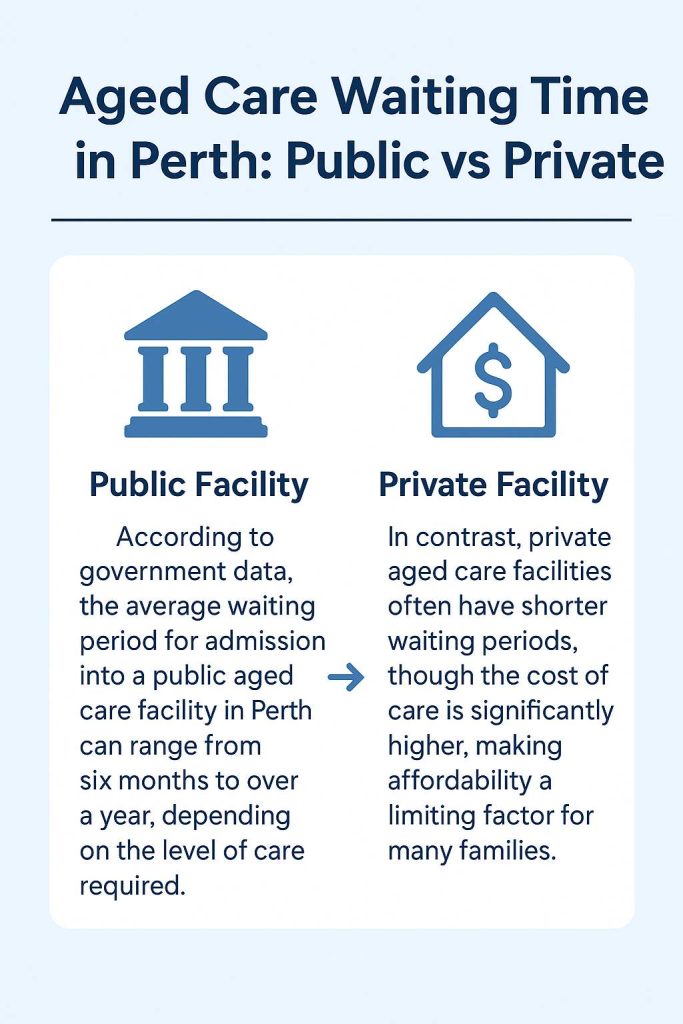When choosing aged care options in Perth, families often face the decision between public and private facilities. Both systems have their strengths and weaknesses, but understanding key differences—such as resident satisfaction, service quality, and availability—can help make an informed choice. This article examines the statistics surrounding aged care in Perth to highlight how public and private aged care facilities compare.
Resident Satisfaction in Aged Care Perth
Resident satisfaction plays a crucial role in evaluating aged care services. According to a survey by the Australian Aged Care Quality Agency, private facilities tend to report higher satisfaction rates among residents. In Perth, 78% of residents in private aged care facilities rated their experience as “very satisfactory” compared to 67% in public facilities. These figures reflect the added amenities and personalised care often available in private aged care homes.
However, it’s essential to consider that public facilities still deliver a high standard of care, with a focus on accessibility and community engagement. Public options, while sometimes lacking in luxuries, ensure that essential health services and social programs are prioritised, contributing to the overall wellbeing of residents.
Service Quality in Public vs. Private Facilities
When comparing the quality of services, private aged care facilities generally offer a wider array of premium services. Private facilities in Perth often provide residents with larger living spaces, more recreational activities, and enhanced healthcare support. Statistics show that 85% of private facilities in Perth offer daily physiotherapy and other allied health services, compared to just 60% in public facilities.
Additionally, private facilities tend to have a lower staff-to-resident ratio, allowing for more personalised care. Perth’s private aged care homes, on average, boast a 1:5 staff-to-resident ratio, while public facilities average around 1:8. This difference is often reflected in the level of attention and care that residents receive.
Despite these differences, Perth’s public aged care facilities have made strides in improving service delivery. Public sector reforms in recent years have focused on increasing staffing levels and improving the quality of care through stricter regulation and funding improvements.
Availability and Access
Availability is a critical factor for many families seeking aged care in Perth. Public aged care facilities generally have longer waiting lists due to the higher demand for affordable services. According to government data, the average waiting period for admission into a public aged care facility in Perth can range from six months to over a year, depending on the level of care required. In contrast, private aged care facilities often have shorter waiting periods, though the cost of care is significantly higher, making affordability a limiting factor for many families.
Aged care in Perth is expected to see increased demand over the coming years. By 2031, the number of people aged 65 and over is projected to rise by 30%, further increasing pressure on both public and private aged care systems. As such, availability of services will remain a key issue for families weighing their options.

Cost Considerations
Cost is one of the primary distinctions between public and private aged care in Perth. Public facilities are generally government-subsidised, making them more affordable for the average family. In contrast, private aged care comes at a premium, with costs that can exceed $150,000 per year for high-end facilities.
However, private facilities often offer more flexibility in terms of accommodation and additional services, which can justify the higher fees for those seeking a more tailored experience. For many families, the choice between public and private aged care in Perth will come down to balancing the level of care needed with what is affordable.
Conclusion
Choosing between public and private aged care in Perth requires a careful evaluation of several factors, including resident satisfaction, service quality, availability, and cost. While private facilities offer enhanced care options and shorter waiting times, public facilities provide vital services at more affordable rates, though they may have longer waiting periods. Ultimately, both types of facilities have their own merits, and the decision will largely depend on individual needs and financial considerations. As the aged care sector in Perth continues to evolve, it’s essential for families to stay informed and consider all available options.
